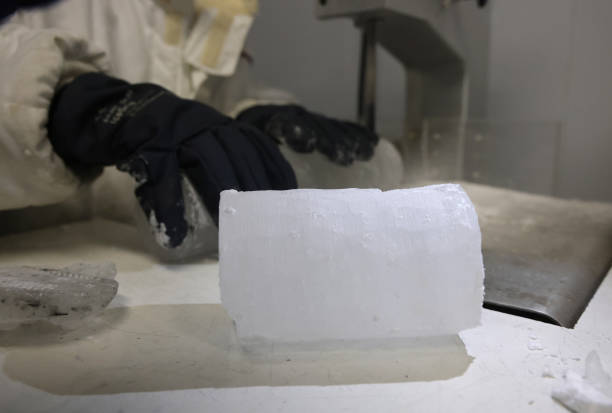Recent research by scientists from the Australian Nuclear Science and Technology Organisation (ANSTO), including Dr. Andrew Smith, Dr. Quan Hua, and Dr. Bin Yang, has shed light on the dynamics of cosmogenic radiocarbon (^14C) in Greenland’s firn layer and the underlying shallow ice.
Their findings, published in The Cryosphere, detail how ^14C is generated, stored, and subsequently lost within the snowpack, which carries significant implications for interpreting ^14C measurements in ice sheets globally.
The study is part of a larger collaborative effort led by the University of Rochester, with Dr. Smith’s long-standing partnership with A/Prof. Vasilii Petrenko focused on extracting atmospheric gases from ice cores in the Arctic and Antarctic regions.
This research enhances our understanding of historical atmospheric methane levels, which play a crucial role in the carbon cycle.
As Dr. Smith notes, the radiocarbon component in gases like carbon dioxide (CO2) and methane (CH4) provides vital insights into the mechanisms driving climate change.

Methane’s relatively short atmospheric lifetime—approximately nine years—means that reducing emissions could yield quicker climate benefits compared to efforts targeting CO2.
The study revealed that while gas diffusion processes in the firn layer can obscure atmospheric signals, a refined understanding of in situ ^14C production is essential.
It involves complex interactions between atmospheric gases and the ice matrix.
Researchers discovered that cosmic rays produce ^14C through interactions with oxygen atoms in the ice. These insights will guide the team’s upcoming work in Antarctica, where they plan to drill ice cores at Dome Concordia.
This location, situated 3 kilometers above sea level and over 1000 kilometers from the coast, presents a unique opportunity to capture a clear ^14C signal due to its low snow accumulation rate.
This groundbreaking research highlights the importance of comprehending ^14C dynamics in ice sheets.
As scientists prepare for their fieldwork in extreme conditions, the implications of their findings extend beyond academic interest, offering new tools for tackling the pressing issue of climate change.
The results may enhance our ability to model historical carbon cycles, thereby informing strategies to mitigate the impacts of global warming.

